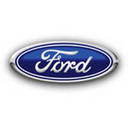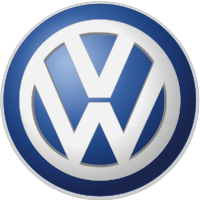Since the company's founding in 1903, the name Ford has been synonymous with the automotive industry. Company founder Henry Ford Sr. became known for innovation, transforming cars into commodities for the masses and his company into an American icon. Below, selected milestones from the company's history:
June 16, 1903: Henry Ford and 11 investors sign articles of incorporation for Ford Motor Company in Michigan.
Oct. 1, 1908: Ford introduces the Model T, which became one of the most popular cars in the world. Production officially ended in May 1927 after total world production of 15,458,781.
Oct. 7, 1913: The Highland Park plant in Michigan begins operations as the first moving automobile assembly line in the world.
Jan. 5, 1914: Ford begins offering $5 per day for eight-hour work days and 15,000 job seekers clamor for 3,000 jobs at the Model T Plant in Highland Park. The previous pay rate was $2.34 per day for nine hours.
March 1, 1941: Ford begins to produce general-purpose "jeeps" for the U.S. military and shifts completely to military production starting in Feb. 1942. Civilian production does not resume until July 1945.
Jan. 17, 1956: Ford common stock goes on sale, with 10.2 million shares sold in the first day, representing 22 percent of the company.
Sept. 7, 1987: Ford acquires 75 percent of Aston Martin Lagonda, Ltd.
Dec. 31, 1988: Ford's worldwide earnings were $5.3 billion, the highest of any auto company to date.
Dec. 1, 1989: Ford spends $2.5 billion to buy Jaguar Cars.
March 15, 1990: Ford introduces the Explorer sport utility vehicle. Though the Explorer is the nation's best-selling SUV model, sales hit a 15-year low in Nov. 2005 and fell 29 percent for 2005.
July 1, 1992: Ford buys 50 percent of Mazda Motor Manufacturing and changes that company's name to AutoAlliance International.
June 20, 1993: Ford opens its first dealerships in China. Its brand sales in China increased 46 percent in 2005, though it still lags behind General Motors Corp. and Germany's Volkwagen AG in China. By the end of 2005, the number of Ford dealers in China totaled 150, up from 100 in 2004.
April 18, 1993: Ford begins production of the Flexible-Fuel Vehicle (FFV) Taurus. FFVs can burn gasoline, ethanol or mixtures of the two. Despite the fact that there are an estimated 5 million FFVs, there are only about 500 ethanol fuel stations in the country. According to the law, if automakers produce FFVs, they can also produce more of other cars that consume more gas.
Aug. 21, 1997: Ford sells the first taxicabs run on natural gas to New York City.
August 2000: Bridgestone/Firestone recalls 6.5 million tires after 271 rollover deaths in Ford Explorers.
May 2001: Ford Motor unilaterally recalls 13 million more tires and Bridgestone/Firestone dumps Ford as a customer, saying Ford was using the tire maker as a scapegoat to deflect attention from problems with the Ford Explorer. Federal investigators ultimately concluded that tire defects were the main cause of the rollovers.
July 11, 2005: Ford's new gas-electric hybrid SUV, the Mercury Mariner, goes on sale. It costs $4,000 more than the gas-only version and has the endorsement of the Sierra Club.
Nov. 1, 2005: Bridgestone Firestone North American Tire LLC agrees to pay Ford $240 million to help cover the costs of the tire recalls, which amounted to $2 billion.
Dec. 22, 2005: The United Auto Workers agrees to a deal with Ford in which 99 cents an hour of any future wage increases will go towards a health-care fund. Insurance deductibles will rise by as much as 33 percent, and the costs for current retirees will also go up. The changes will save Ford about $650 million a year. (Ford's health-care bill for 2005 was $3.5 billion.)
Dec. 23, 2005: Ford announces it will transfer $2 billion to shore up Jaguar Cars, which it bought in 1989 for almost $3 billion in today's prices.
2005: Ford loses market share for the 10th year in a row, and also loses its place as America's best-selling brand to GM's Chevrolet. Ford sold around 2.9 million vehicles in 2005 for a 17.4 percent market share — down from a market share of 18.3 percent in 2004 and of 24 percent in 1990.
Jan. 23, 2006: Ford announces it will cut up to 30,000 jobs and idle 14 plants by the year 2012.


